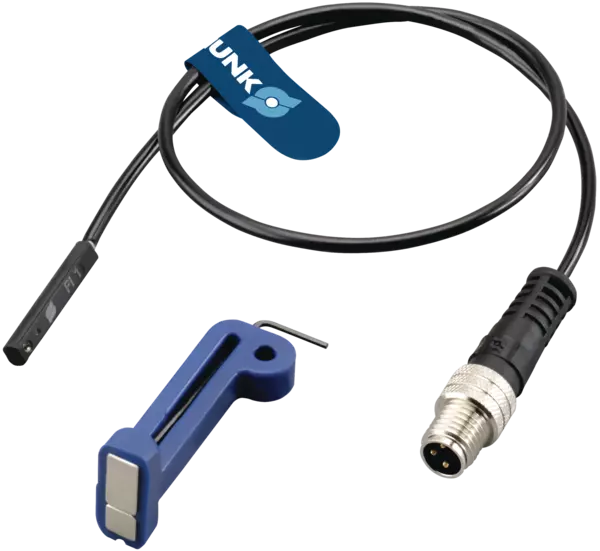MMS 22-PI1
Programmable magnetic switches
A magnetic switch is used to monitor the status of automation components. They detect the approach of a magnet without contact and above a certain switching value, they put out a digital value. The switching value can be programmed.
Description
Advantages – Your benefits
- Individual switching point - without interfering contours
The magnetic switch can be completely inserted, which means that no interfering contours arise due to overhanging sensor systems - Programmable within no time
due to non-contact adjustment of the switching points and hysteresis - Adjustable hysteresis
for precise position monitoring – even at very low strokes - Suitable for narrow installation spaces
due to wired teaching with TeachTool plug - Version with LED display
for control of the switching position directly at the sensor - Version with standard plug connector
for fast and easy exchangeability of the extension cable - Very flexible cable in PUR version
for a long service life - Installation into the sensor groove
for space-saving, easy, and fast assembly on the product
Options and special information
- High protection class
IP67 when plugged in, for use in clean or dusty environments or in case of contact with water. Operability in case of contact with other media (coolant, acids, bases, etc.) is often given, however cannot be guaranteed by SCHUNK. - Power supply
10 - 30 V DC at < 10% residual ripple - Sources of interference
Sensors can be influenced by other magnetic fields in the immediate vicinity. Disturbing magnetic fields can be generated by motors, electric welders, permanent magnets or magnetized material (so-called soft magnets) such as hexagon socket wrenches, chips, etc.

